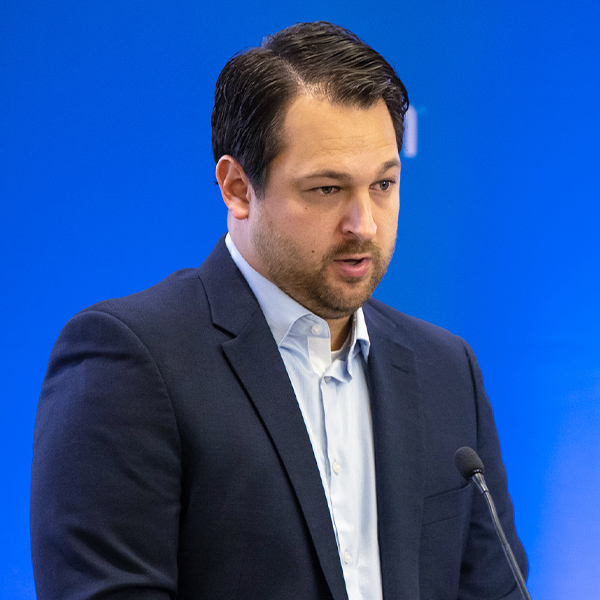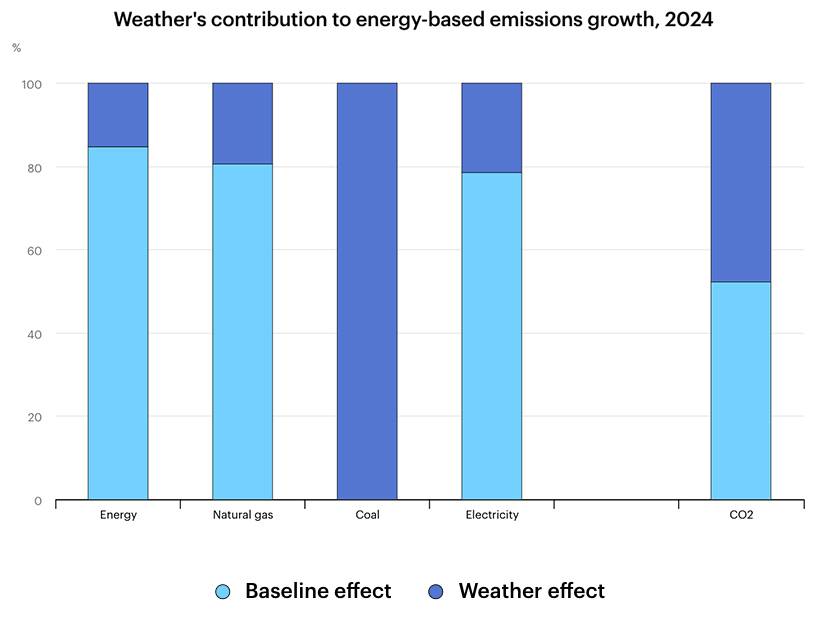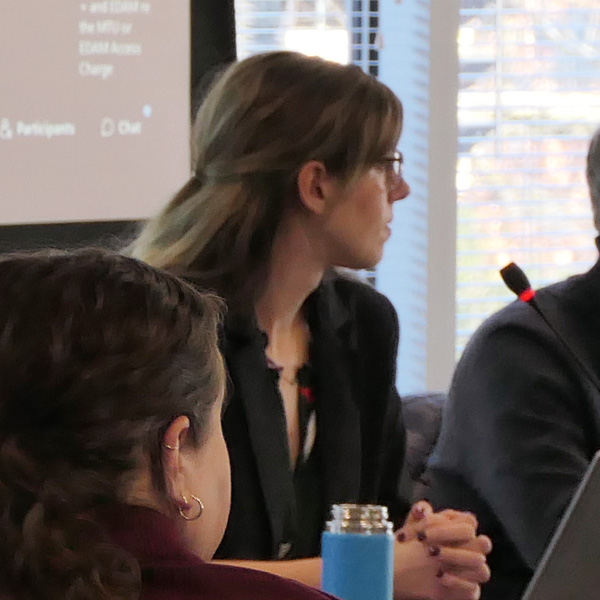FERC was flooded with comments on a wide-ranging complaint consumers filed seeking increased oversight of local transmission planning, with utilities arguing the complaint should be tossed, while others contend it has merit and raises issues that need to be addressed.
The complaint alleges that transmission owners around the U.S. have been moving more projects into local transmission siting processes because they fall into a regulatory gap with minimal oversight (EL25-44). To remedy that, the complainants contend, all lines rated at 100 kV and above should be regionally planned, and FERC should set up “independent transmission monitors” to oversee the planning process. (See Consumer Groups Seek Independent Oversight of Local Tx Planning.)
The complaint was lodged against every RTO and ISO and all other transmission planners under FERC jurisdiction.
In comments filed March 20, the Edison Electric Institute said the complaint “is anti-infrastructure, suggesting unworkable requirements that would stymie the development of necessary transmission projects at a time when substantial investment in transmission is needed to serve growing load, support generation expansion, and maintain reliability, as well as to support national security and ensure the United States is positioned to be economically competitive in the global market.”
EEI echoed an argument common among opponents of the complaint: that in highlighting broad general issues with local transmission, the complaint failed to meet the burden of proof FERC requires to grant filings under Section 206 of the Federal Power Act.
“Complainants take pages to recount history, identify a host of transmission projects rated at 100 kV, cite to various studies in support changes that would apply nationally, apparently in service of ensuring that consumers are afforded ‘economically efficient energy services at a reasonable cost,’” EEI said. “Yet, they draw no clear linkage between the recitation of history, listing of projects, and the requested relief.”
Like many other opponents, EEI also said the complaint amounts to a collateral attack on previous FERC orders on transmission, including Order 1920. FERC considered requiring more oversight of local transmission and independent transmission monitors in the rulemaking process that led to Order 1920, but did not include those changes in the final rule.
“Local transmission investments are vital to enabling the interconnection of distribution resources, as even concentrated pockets of distributed resources can require localized transmission system reinforcements such as the reconductoring of lower-voltage lines or the construction of new substations,” EEI said. “Local projects also enable transmission owners to nimbly develop infrastructure needed to effectuate state goals. In addition, upgrades to local, lower-voltage facilities are often needed to quickly meet changing system conditions and improve operational flexibility.”
WIRES Group also urged FERC to reject the complaint, saying now is not the time to inject uncertainty into the transmission planning process given the challenges facing the grid.
“Utilities are facing potentially overwhelming demand driven by data centers, and artificial intelligence,” WIRES said. “Investment in transmission infrastructure will enable the interconnection of new generation, the service of new load demands and efficient operation of the grid.”
Centralizing all local planning at 100 kV and above would prove unworkable, WIRES said. Regional planners would have to replicate a public utility’s in-house staff, including transmission and substation engineering experts, real estate specialists, field crews, environmental staff and operational personnel.
“It is difficult to conceive how a regional planner could fill those needs in a timely fashion, even if such experts were available for hire,” WIRES said. “Complainants fail to explain how this transfer or duplication of staff, knowledge or expertise is even reasonable, efficient, or cost effective for customers.”
On top of staffing, there are issues with handling data from local utilities that often is confidential, WIRES said.
NARUC did not weigh in on the specifics of the complaint, but it intervened to note it had passed a resolution at the recent winter meetings that is related to local transmission planning oversight.
“NARUC urges the commission to act swiftly to put in place effective and robust transmission cost management and oversight processes for ‘end of life’ or ‘asset condition’ transmission projects in RTO regions, when requested by states within the region, with recovery of associated costs borne by those regions,” it said in brief comments.
Regional Views
Some comments from individual states highlighted how inconsistent oversight for local transmission is at the state level.
The California Public Utilities Commission said any “repair and replace” projects that do not expand grid capacity are not included in CAISO’s planning process. From 2019 to 2021, 63% of capital additions in the ISO’s territory were “self-approved” by utilities.
“The proportion of spending on utility self-approved projects continues to be the overwhelming majority of transmission spending by California’s three large IOUs and has actually increased over past years,” the CPUC said. “In the most recent data from the CPUC’s Transmission Project Review (TPR) Process, nearly 75% of the capital expenditures on the IOUs’ transmission projects over $1 million for years 2020 through 2024, were on self-approved projects.”
Cost estimates for new CAISO transmission required over the next 20 years range from $45.8 billion to $63.2 billion.
“Taken in its entirety, transmission investment in the CAISO in the next 20 years could be staggering, and measures are needed in the CAISO and elsewhere to enhance transparency and oversight of more transmission projects to promote affordability and to achieve the most cost-effective transmission grid possible,” the CPUC said.
The New York Public Service Commission told FERC that local transmission projects in its territory are covered either through utility rate cases or state-run planning processes designed to meet the state’s climate and renewable energy goals.
“While the complaint is directed at the NYISO, it implicates the traditional regulatory authority exercised by the NYSPSC,” it told FERC. “The NYSPSC strongly opposes the complaint, which seeks a remedy that would preempt the NYSPSC’s existing planning authority and rate oversight covering local transmission upgrades and replacements under state law.”
New York’s transmission owners agreed, saying FERC should deny the complaint for being legally and factually deficient.
“The ink is barely dry on Order No. 1920-A, rehearing requests are still pending commission consideration, and transmission providers across the United States — including the NYISO — are hard at work developing their compliance proposals,” they said. “The commission, for its part, is actively overseeing compliance — a process that is both deliberate and essential to ensuring a smooth transition to a long-term orientation in regional transmission planning.”
New England states generally supported the complaint, but the Maine Public Utilities Commission intervened to say that its review of local transmission projects offered enough oversight, though it couldn’t extend that claim to the entire region.
“While the complainants correctly identified a regulatory gap present in New England, the MPUC submits that the one-size-fits-all remedy proposed by the complainants is inappropriate and should be rejected,” the regulator said. “Any remedy to the regulatory gap identified by complainants should consider regional differences and provide for regional flexibility, especially since, as described below, there are already regulatory and state statutory frameworks in place that address certain aspects of asset condition projects.”
The New England States Committee on Electricity agreed with complainants that the process in New England is not just and reasonable because asset condition projects are too lightly overseen.
“Unlike transmission projects in New England that ISO-NE selects to meet reliability needs through the regional planning process, the process to rebuild, refurbish or replace aged and damaged transmission facilities is conducted by individual and investor-owned transmission companies on an ad hoc basis,” NESCOE said. “The scale of these projects, to a substantial degree, go beyond mere ‘in kind replacements’ and instead are leading to the massive reconstruction of the regional electric power grid. Yet ISO-NE, the regional system planner, is largely shut out of this process.”
While the New England states complained about the process there, some of the biggest transmission owners in the region (Avangrid, Eversource, National Grid and others) argued the process already benefits from oversight.
“The NETOs’ [New England Transmission Owners] asset condition project planning process provides opportunities for state regulators, consumer advocates and other stakeholders to participate, ask questions and challenge projects before costs are allocated to customers across the region,” they told FERC. “Additionally, the NETOs, the New England states and regional stakeholders have been working to further improve the transparency of asset condition project planning and enhance opportunities for stakeholder participation in that process.”
The complaint also led to a split among PJM stakeholders, with the Organization of PJM States Inc. filing brief comments at least agreeing that FERC should deal with the issues highlighted in the complaint.
“Local planning of transmission in the PJM region has vastly outstripped regional planning in recent years, and thus retail consumers have not been able to reap the benefits of regional, more holistically planned projects,” OPSI said.
OPSI did not take a position on the complaint, but said it wants FERC to address the proliferation of locally planned transmission projects with finality.
PJM, on the other hand, urged FERC to reject the complaint.
“The complainants failed to bear the burden of demonstrating with substantial, specific evidence that PJM’s regional planning provisions are unjust and unreasonable because they do not also encompass local transmission planning,” the RTO said. “PJM’s regional transmission planning authority stems from that granted by the PJM Transmission Owners which have each turned over operational control of their interstate transmission systems to PJM, and reserved for themselves the continued right to local transmission planning.”
Some Ask ‘Why Us?’
With its broad allegations against the entire industry, some of the respondents questioned why they had been cited in the complaint in the first place.
SPP noted that its planning process largely already aligns with what the complaint wants, but it still was compelled to file a response. A group of its transmission owners, including American Electric Power, Evergy and Xcel, agreed with the RTO.
“As a threshold matter, the complaint should be dismissed outright with regard to the Southwest Power Pool and the SPP TO Group because the complaint concedes that ‘SPP’s regional approach is consistent with the relief requested nationally through this complaint,’” the TOs said.


